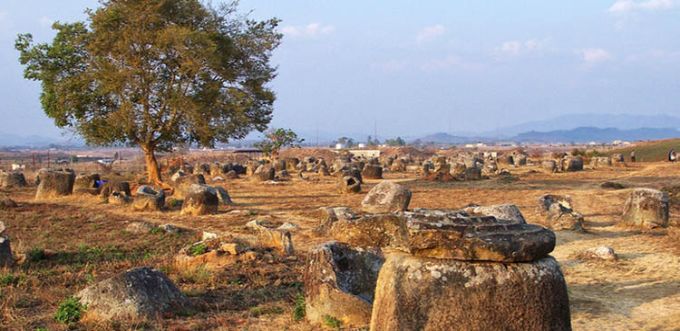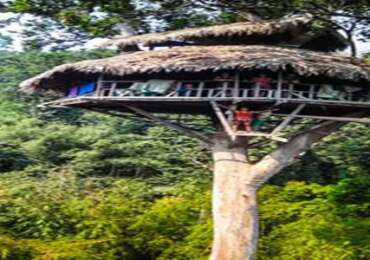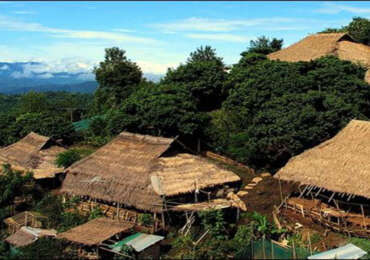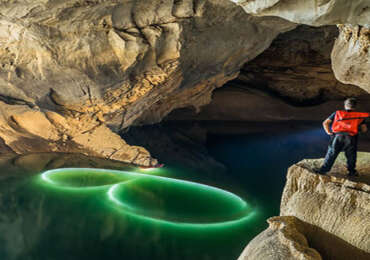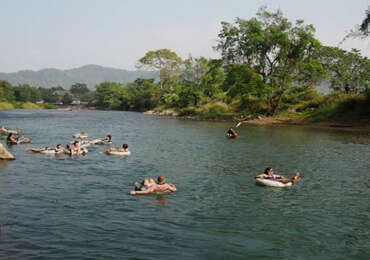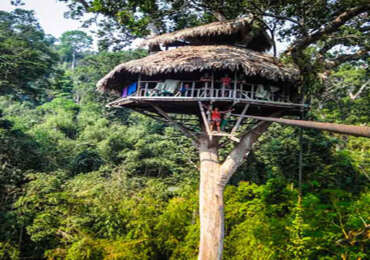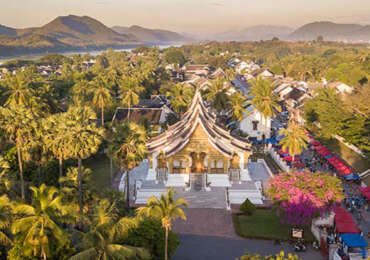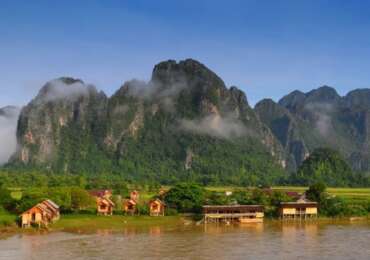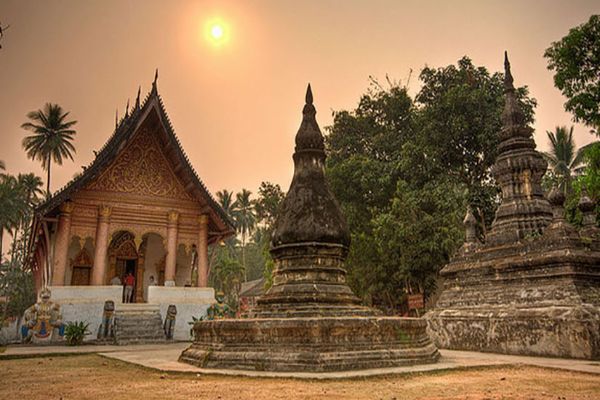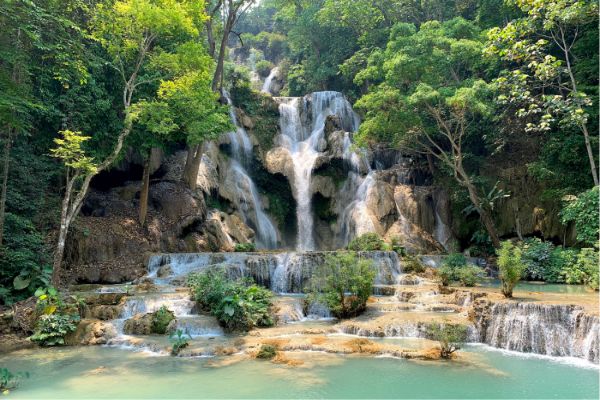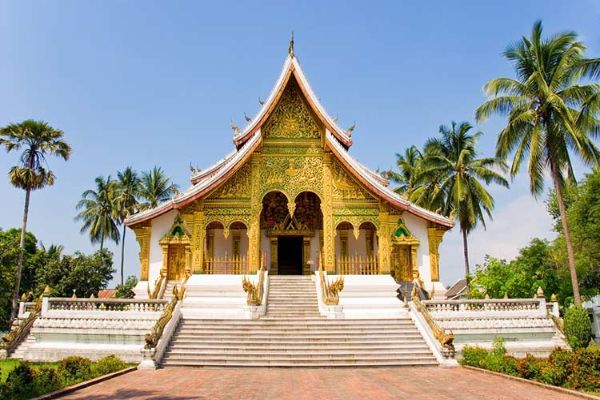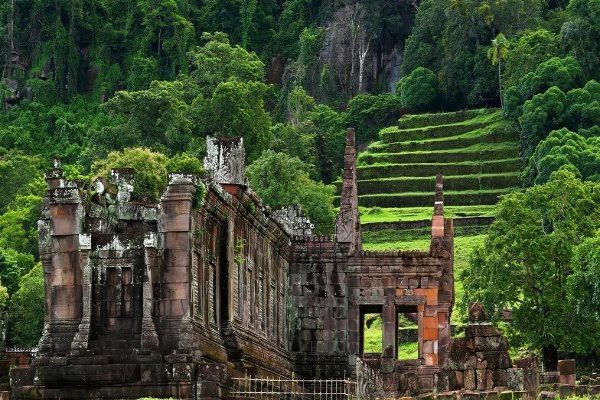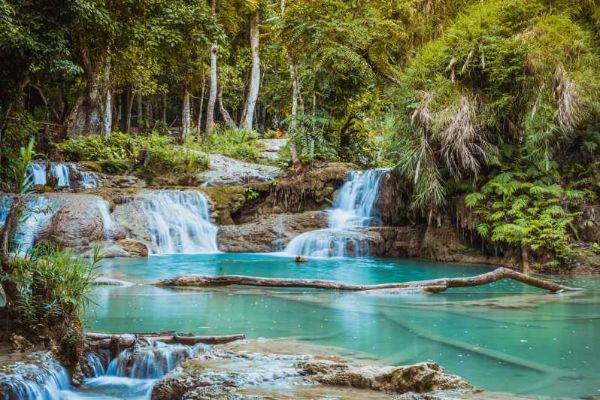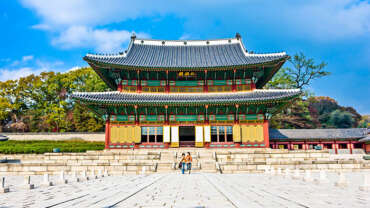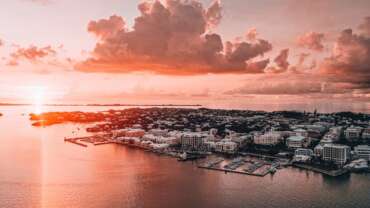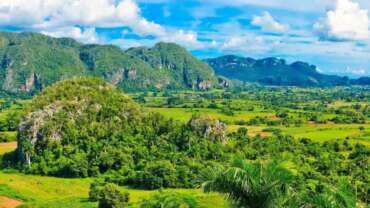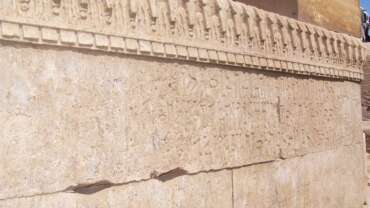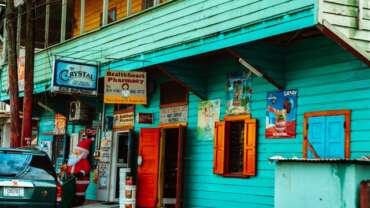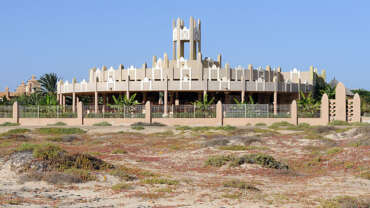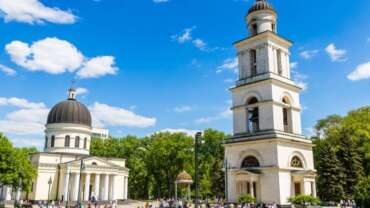Welcome to Laos - Untouched Nature
Present-day Laos traces its historic and cultural identity to the kingdom of Lan Xang Hom Khao (Kingdom of a Million Elephants Under the White Parasol), which existed for four centuries as one of the largest kingdoms in Southeast Asia. Today, Laos offers truly authentic experiences in a country of friendly and hospitable people. Laos is “Untouched Nature”, trees cover 40% of it and has 20 National Protected Areas conserving the environment and rare wildlife.
Laos is a Southeast Asian country traversed by the Mekong River and known for mountainous terrain, French colonial architecture, hill tribe settlements and Buddhist monasteries. Vientiane, the capital, is the site of the That Luang monument, where a reliquary reportedly houses the Buddha’s breastbone, plus the Patuxai war memorial and Talat Sao (Morning Market), a complex jammed with food, clothes and craft stalls.
History of Laos
Though the recorded data about the history of Laos begins with the unified state to the emergence of Lan Xang Kingdom in 1353, historical research shows that the multiethnic state existed before the founding of the Kingdom of Lan Xang. Based on the artifacts collected the first people who inhabited Laos lived by hunting and gathering with stone tools in northern regions. During the 1st millennium BC, Astro-Asiatic people have evolved into a more multifaceted agriculturist civilization accountable for creation of funeral urns on the Plain of Jars. They are believed to be the ancestors of the Lao Theung (upland Lao) ethnic group.
It was during the 7th Century when a group of linguistic Tais from Yunan Southern China start migrating to the northern areas of Burma, Laos, Thailand and Vietnam. These people settled along the Mekong River and began to form communities called mandalas or muangs. Steadily, their settlement was established further south of the Mekong River in Laos. Muang Sua was the name given to Luang Prabang following it conquest in the later part of 7th century. It was became the Kingdom of Sri Sattanak, a name associated with the legendary Naga (mythical snake) who said to have dug the Mekong riverbed.
It was in the second half of the 8th century when Khmer Empire under Indravarman I started expanding the empire towards the territories of Sipsong Panna on the upper part of Mekong river. By the year 1185 to 1191 Muang Sua experienced a brief period of Khmer suzerainty under Jayavarman VII. The Khmer were able to maintain their empire till 1253 until the Mongols invaded Laos from the north. The ruler of Thai dynasty in Sukhothai made himself the agent of Mongol interest to eliminate the vestiges of Khmer and Cham power in central Laos. Upon the withdrawal of the Mongols, the Siamese dynasty of Sukhothai was formed.
The first Laotian state was founded was the Lan Xang Kingdom formed in 1353 by exiled Laotian prince Fa Ngum. Fa Ngum married one of the daughters of a Khmer King and in the mid-14th century he recruited 10,000 armies to regain control of the parts of Laos which had fallen by the Sukhothai Empire. In 1354 Fa Ngum organized the conquered principalities into muang and founded the kingdom of Lan Xang (million elephants), in which he was crowned as King. Lan Xang kingdom extended from the border of China to Southern Laos, and was considered to be one of the largest kingdoms in Southeast Asia at that time.
The kingdom of Lan Xang remained largely unified and powerful over 300 years. Though all of the principalities were considered one unified kingdom, the supervision of the kingdom remained more regionalized. The King ruled and influenced his direct town and surroundings while it is the lord of each muang who established their own rules and taxes in each individual region.
During the Lan Xang period, Theravada Buddhism in Laos was introduced. Fa Ngun was also attributed for bringing the scared Phra Bang Buddha to Luang Prabang from Khmer.
In 1960, the Kingdom of Lan Xang fell prey to a series of rival claimants to its throne which resulted to the internal division and pressure from neighboring kingdoms and caused the split of three warring kingdoms centred on Luang Prabang, Vientiane and Champasak. The division caused the region to become vulnerable to attacks from outside invaders and by the late 18th century all three of the Lao Kingdoms had surrendered to Siam. Laos became a Siamese satellite state in 1829, despite this development; Laos frequently rebelled and fought ferociously to regain its independence.
In the early part of 19th century the French started to emerge in the region, pronouncing Cambodia as a colony in the mid-19th century. It was in 1893 when the French were able to force the Siamese to concede Laos to the French administration. Despite the fact that the French had a direct control over most of the country, Luang Prabang’s royal family and home were preserve and the local government were allowed to function independently under the rule of King Zakarine.
In World War II the French position in Indochina was weakened. The French administration came to an end and Japanese briefly occupied French Indochina, including Laos. Prior to Japanese submission, King Sisavang Vong of Luang Prabang was induced to declare independence from France in 1945. Vientiane and Champassak united with Luang Prabang in September 1945 to form an independent government under the Free Lao (Lao Issara) banner. It was early 1946 when the French troops reoccupied the country and reestablished its control over the country.
Laos independence was formally recognized by the French Union in 1949 and remained a member of the Union until 1953. A Royal Lao Army was formed; a number of clinics, hospitals and schools were established. Despite being economically dependent to France the country was internationally recognized as a fully independent institutional state on 1954 at Geneva Convention on Indochina. The first coalition government was formed in 1957. Price Souvanna Phouma, the royal prime minister and Pathet Lao leader Prince Souphanouvong agreed in re-establishment of unified government. It was in 1958 when the coalition government collapsed and the rightist forces took over the government.
A second Geneva Convention was held in 1961 to 1962 for country’s neutrality and independence. The Neutralist was represented by Quinim, the rightists by Phoui Sananikone and Phoumi Vongvichit for Pathet Lao. After the agreement was reached the signatories accused each other of violating terms of agreement and the war in Vietnam engulfed Laos.
The growing American and North Vietnamese military presence in the country drew Laos into the second Indochina war. For almost a decade, Laos was imperiled to extremely heavy bombing as US sought to destroy the portion of Ho Chi Minh Trail that passed through eastern Laos. During the 9 years of war the US executed more than 580 000 bombing missions over Laos and released over two tons of bombs per person. The war continued until 1973 by the time the Vietnamese ceasefire was negotiated Laos had the dubious reputation of being the most bombed country in the history of welfare.
The fall of Phnom Penh and Saigon to Communists in 1975 ended the war in Indochina. The country was liberated from the American influence and Royal control. A new coalition government known as Lao People’s Democratic Republic was established. The new government imposed centralized economic decision-making towards the country’s socialism. The harsh policies and deteriorating economic conditions along with the government efforts to enforce political control prompted a migration of lowland Laos and ethnic Hmong from Laos. Collectivism policy of the government led to closure of numerous businesses after 1975. However during 1981 the government reversed its position on the management of economy and the country’s economy was liberalized in 1986.
The country’s diplomatic overtures with its neighboring countries started during 1990s and by 1995 the US lifted its ban on aid to the country. A number of incidents of insurgency against the government occur during 2003 to 2007. There are still a number of anti-Communist rebel groups that has been protesting the government’s unwillingness to embrace democratic reforms.
People of Laos
Laos has a total population of 6,834,345 (2009 est.) with an average growth of 2.32%. The country’s low population density has allowed the continuation of a village society dependent on subsistence agriculture. Laos’ lack of adequate infrastructure and effective transportation networks has contributed to relative independence and autonomy of most villages. Lowland Lao ethnic groups considered residency in a village as an important aspect of social identity while upland Lao ethnic groups perceived clan membership as the more important point of social identification.
About 67% of the country‘s population are Laotians and are related racially to the Thai people. Roughly a quarter of the population particularly on the Southern part of the country is ethnically belonging to Mon-Khmer group, about 15% are Thais and the remaining of the country’s population are various hill tribes.
Lao is a multiethnic nation with more than forty ethnic groups, which are classified within three general families: Lao Sung (highland Lao) embraces Hmong-Mien peoples of Austro-Thai language family and Sino-Tibetan language family; Lao Theung (upland Lao) comprises all Austro-Asiatic language family and the Lao Loum (lowland Lao) corresponds to Lao, Lu, Phuan and other Thai speaking Austro-Thai language family.
Lao Sung
Lao Sung are the highland Lao this include the ethnic groups of Hmong, Akha, and Mien. Lao Sung comprises 10 % of population in 1993. They are believed to be the most recent migrants to the country and have been coming from the southern China since the late 18th century. Highland villages reside on mountain tops, hillsides over 1,000 m in elevation and upland ridges. Most of them are considered as semi-migratory since they moved to new locations when swidden farming resources have been exhausted in the old area. Majority of the Lao Sung village are settled in the north with only Hmong villages found as far as south as Vientiane.
More than two-thirds of Lao Sung is considered Hmong. Hmong villages in Laos, Thailand and Vietnam are traditionally found on mountain or ridge tops. Hmong who fled China and migrated to Vietnam, Laos and Thailand were traditionally paddy rice farmers who adopted swidden farming because of lowland basins that were already settled in the region. Hmong villages rely on swidden farming to produce rice, corn and other crops. They tend to plant a field until the soul was exhausted, rather than once a year or two before letting it to be untilled.
Hmong houses usually measures from about five by seven m up to ten by fifteen m for large extended households. Usually built directly on the ground, with walls of vertical wooden plank and gabled roof of thatch or split bamboo. Interior of the house is commonly divided into a kitchen at one end and several sleeping niches at the other end with beds raised thirty to forty cm above the dirt floor. Crops such as rice and corn are generally stored in large woven bamboo baskets inside the house.
The swidden farming system being practice by Hmong villages is based on non-glutinous rice supplemented by corn, tubers, wide variety of vegetables and squash. Hmong traditionally grow opium in small quantities for medical and ritual purposes however during the French colony the expansion of opium production was encouraged. Since then opium become an important cash crop for the Hmong and other Lao Sung villages. Opium is considered to be the only product that combines high value with low bulk and is nonperishable so easy to transport, thus despite the government’s effort of prohibiting opium production Lao Sung villagers particularly in isolated upland settlements plant opium poppies in cornfields during cold season. Highland Laos also raise chickens and pigs in large numbers as possible, buffaloes and cattle graze in the surrounding forest and abandoned fields.
Highland village farming depends on household labor and simple tool. The area of land to be cleared and farmed determined to the number of workers in the household. Crops such as rice and corn are weeded twice and three times respectively during the growing season. Other crops like beans, cucumbers, peppers and squash are inter-planted with rice or corn while arrowroot, cabbage, and taro are found adjacent to the swiddens or in the village.
Hmong society are subdivided into different clans and usually named according to the features of traditional dress. The Green Hmong (sometimes called Blue Hmong) are the most numerous one; the Striped Hmong; and the White Hmong. Languages used by Hmong clans maybe somewhat different but mutually comprehensible. Households are consisting of large patrilineal extended families in which the parents, children, and wives and children of married sons all living in the same roofs. They also reckon kinship patrilineal kinship and recognized fifteen or sixteen patrilineal exogamous clans, tracing their descent back to a common mythical ancestor.
The governance of the village of Lao Sung is in the hands of headman and its council, however the clans elder’s’ opinions play an important plan in decision making of the administration. Among the highland Lao, Hmong preserved the tradition of king and sub-chiefs and a large-scale organization, though the practice was limited to village. Inter-household cooperative relationships occurs less often rather cooperation mostly take place among the primarily close kin who can be relied upon for assistance in case of emergency or family hardship.
Lao Theung
About 22% of the population comprises of Lao Theung. Lao Theung consists of at least thirty-seven different ethnic groups scattered throughout Laos. They are thought to be the descendants of the earliest people to inhabit the region. Lao Theung groups usually reside in a relatively limited geographic area such as border between Bokeo, Oudomxai, Louang Namtha and the provinces of Attapu and Saravan in the south.
A great number of Lao Theung villages are found on mountain slopes but neither at the peak nor the ridges. However a growing number of villages have been founded at lower elevations near rivers or roads. They speak languages of Austroasiatic family however some languages are closely related to such as Kammu, Lamet, and Sam Tao. Lao Theung is considered to be a swidden farmer and semi-migratory since they have occasionally moved their villages as swidden areas were exhausted.
Lao Theung groups depend on swidden rice cultivation as a basis of their household economy. Swidden rice seldom yields as much as paddy fields thus cassava, corn and wild tubers serve as an important component to supplement a frequently inadequate rice supply. They also engaged in hunting and gathering in the forest surrounding the village. Fishing is also common for some groups although rarely practiced by others.
Lao Loums
Lao Loums dwell in the lowlands on the banks of Mekong River and its tributaries, and in the cities. They have been the dominant group with 68% of the population. They speak Laotian Tai which is similar to the language spoken by the Thais. They traditionally live in stable independent villages situated near lowland rivers or streams. Houses are built by hands using local materials such as wood, bamboo or thatching grass. Houses of Lao Loum commonly range from five by seven meters to eight by twelve meters. Houses are usually built with a porch on the long side that serve as a public area while interior is divided into one or two sleeping rooms, common room for eating and visiting and a separate kitchen.
Lao Loums economy is focused on paddy rice cultivation and most village activities and daily life revolved around rice production. Household works center on paddy production during the time of transplanting and harvesting cooperative work groups are often organized by several families to help the tasks completed in time. Sticky rice is considered as the staple food. It must be steamed rather than boiled and commonly eaten with fingers and dipped in soup or vegetable or meat dish. Meals are relatively simple and commonly include chicken or duck and a bottle of local rice liquor.
The lowland villages also practice swidden rice farming however this method is less efficient than paddy rice cultivation. Swidden rice in certain villages is grown as a supplement to paddy rice production. In general, Lao Loums are largely self-sufficient, they grow their own food, make their own clothes and tools, and trade any spares for household goods, kerosene, medicine and soap.
Traditionally, fishing and hunting plays an important role in the household economy of lowland villagers. To hunt small deer, wild pigs or birds homemade rifles are used. Nets, traps or hooks are used to catch fish. Education for lowland villages is usually provided to boys and young men through Buddhist temples. However this practice is being supplanted by national education system although old practice still exists in some areas.
Laotians are considered warm and welcoming, always honoring guest with a respectful “Sabai dee” greeting. They greet each other with “nop”, a prayer-like gesture in which palms are placed at chest level without touching the body. Person in low status does “nop” to show respect to their elder or social superior. Lao people are known for being frank, friendly and open-minded. They possess a deep sense of courtesy and respect. As a custom of the Laotians, shoes are removed when entering a Wat or a private home. Men usually sit with legs crossed or folded to one side while women prefer the latter. As a gesture of hospitality they served guests with fruits or tea upon entering their house.
Art & Culture of Laos
Arts
One of the distinct characteristics of Laos is the diversity of its people and cultures. The country’s culture is heavily influenced by its neighbors, with a trace of Khmer, Thai and Vietnamese culture which is apparent in their arts, architecture style, cuisine, literature, music and sculptures.
Theravada Buddhism has a prevailing influence on Lao culture, evident to the country’s architecture in which is often religious in nature. Pha That Luang, the “Great Sacred Stupa” in Vientiane is one of the most notable structures in the country. It is considered to be the most important religious edifice and symbol of Lao independence and sovereignty since the time of Lan Xang. Built in the 16th century under King Setthathirat, Pha That Luang consists of a central stupa with three levels each conveying a reflection of part of Buddhist doctrine. The encircling walls contain a large number of Lao and Khmer sculptures. The glided structure of this imposing stupa reflects marvelously in the sunset.
During the Thai invasion in 1828 the structure was heavily damage and left abandon. Louis Delaporte, French explore and architect came across the abandoned temple and made detailed sketches of the temple. The stupa was restored to its original structure in 1930s with the guidance of the French.
Lao’s architectural styles can be distinguished to the geographical location of the temples and monasteries. In Vientiane, the wats are built with large rectangular structures constructed of brick and covered with stucco and high-peaked roofs. The roofs of the wats built in Luang Prabang are sweep down almost reaching the ground while in Xieng Khouang the wats roofs are not tiered.
Another example of Laos distinctive art is the religious images known as “The Calling for Rain” posture of Buddha image which illustrates the Buddha standing with his hands held firmly at his side, fingers pointing to the ground.
Laos is known for its weaving. Most of the women in small villages of Laos weave cloth of cotton or silk. Distinct weaving techniques are exhibited by different ethnic groups in different regions of the country. Most of the traditional designs have a mythological motif or animal that pertains to certain ceremonies or festivities in the country other designs include geometric patterns or temple motifs. Weavers arduously choose elaborated brocade patterns, making scarves, shawls, traditional skirts, household decorations, and blankets.
Literature
Very little is known concerning the history of Lao’s literature due to decentralization and isolation of the early society. The first recorded Lao traditional literature was from 15th century and 16th century. Most of the written literature has a Buddhist religious theme, or historical documents. Most famous of which is a classical interpretation of the “Ramayana”. However, popular literatures are maintained by oral tradition of folk tales. The country has a long tradition of oral literature, including children’s stories, folk tales, parables, poems and proverbs.
Oral Literature is narrated through lengthy poems that can last up to six hours. Folk literature is amusing and varied with several types of myths which are both in poetry or prose and most of them are considered scared. Some of the folk literatures of the country were recorded on palm leaf manuscripts due to the belief that copying books is a way of making merit of giving away knowledge.
Lao literature boasts three masterpieces – the Vetsantrasadok, the most popular among the three, it relates life of Buddha before his enlightenment; the Sin Say or Khun Borom, a story of the first human king sent from heaven to lead Lao people to prosperity; and Thao Hung, is a historical epic recounts the struggle between ancient ruling families during the Lane Xang dynasty.
Another important Buddhist literature in Laos is the Dhammapada. It is actually belong to the Theravada school of Buddhist tradition. Dhamma means truth while Pada means way, so the Dhammapada means the way of the truth. The book is originally written in Pali and contains 423 verses of teaching within Buddhism, guiding voice along the struggle-laden path towards Nirvana.
There are also collection of palm leaf manuscripts of folk medicine and remedy collection that explain the medicinal herbs and ways how to heal or cure symptoms. Words of incantation as well as rituals to heal sickness are also included in these manuscripts. One good example is the folk medicine for longevity. In order to live longer one must prepare the following ingredients such as 108 myranbaran fruit, 108 wild phyllanthus emblica fruit, 108 diospyros mollis fruit, 1200 g of the root of solenospermum wallichii (Kurz) Loes, 300 g of hot chili peppers, 150 g of salt, 2400 g of ginger roots, 300 g of peppers and 300 g of sugar and marinate these ingredients in whiskey to be taken in the morning and in the evening.
Lao rhymes has four major forms in poetic conventions – kaap, a form of Laos rhymes to be read loud and mostly sung in various occasions particularly during Boat-racing or Rocket Festivals; Kon, has a specific rhyming pattern, seven syllables in the middle of a line with external and internal alliterations and rhymes; Khong, is another type of Lao rhyme which syllables are interconnected between the lines; and the Saan, can be in form of poetic prose or in verse.
Laos has a highly diversified musical heritage among its numerous ethnic groups. Lao traditional music can be divided into classical and folk. Traditional classical music is closely related to the Siamese. Sep Nyai is a form of ceremonial and formal music that is being played with sets of gong, xylophone, oboe, kettle drums and cymbals. Sep Noi is another form of classical music capable of playing popular tunes including two-bowed string instruments, the So U and So I. Folk music or Lum may not be written down but is played from memory and usually accompanied by Khen (a free-red instruments with a vibrating reed fitted in each pipe,) buffalo horns, tam tam drums, two-string violin and xylophone.
Festivities
Festivities in Laos are usually link to agricultural seasons or Buddhist holidays. The Phi Mai Festival or Buddhist New Year is considered to be one of them most significant celebration in the country which takes place in the mid-April. Boun Ban Fai (the Rocket Festival) is being celebrated to entice the rains to fall, this usually take place during the later month of May. During the celebration plenty of processions occur with music and dancing, accompanied by firing of bamboo rockets to prompt heaven to send rain. During the month of November Tat Luang Festival occurs. This is a week-long celebration with range of fireworks, music and parades. Hundreds of monks gather in Golden Stupa to pray.
January – Boun Phavet, commemorating Buddha’s reincarnation
February – Boun Makha Bu-sao (Full Moon), celebrates the first ever sermon of
Buddha after his enlightenment.
March – Boun Khoun Khao, harvest festival celebrated around the wats
April – Boun Phi Mai, the Lao Buddhist New Year
May – Boun Bang Fai, the well-known rocket festival; Visakha Puja
celebrates the birth, death and enlightenment of Buddha.
June/July – Khao Phansaa the beginning of the Buddhist lent
August/September – Boun Song Heua is the boat racing festival which marks the
end of the rainy season
October – Boun Ok Phansaa is the end of the Buddhist lent and the three
month retreat of the monks. During this time boat racing in Vientiane is being held.
November – That Luang Festival, a week-long festival throughout Laos held
during the full moon of the twelfth lunar month.
November/December – Hmong New Year festivities takes place in the villages in
Northern part of the country. Lao National Day also celebrated on 2nd of December.
Flora & Fauna
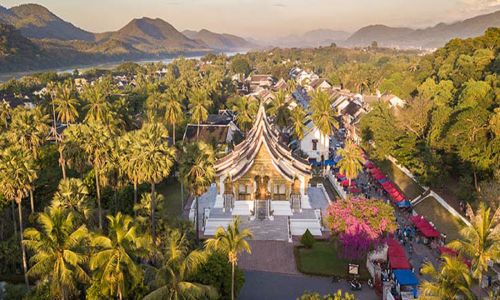
Laos is one of the only few countries in Southeast Asia with pristine ecology, with almost two-thirds of the country is covered by thick forest. Laos terrain is mountainous with a maximum elevation of 2,820 m in Xieng Khouang province. The northern part of the region is dominated by hills. Mekong River is the main geographical feature in the west and forms a natural border with some parts of the neighboring countries.
Tropical rain forests are usually comprised of trees like bamboos, teak, and Asian Rosewood that shed leaves during the dry season. Laos tropical rainforests are composed of three vegetation layers. High reaching dipterocarps form the top layer. The middle canopy is made up of hardwood like teaks, and Asian Rosewoods, while small bushes, shrubs, wild grasses and other wild species of climbers and bamboos inhabited the third layer. The southern part of the region is surrounded by lush tropical vegetation similar to the Kampuchean type; dry dipterocarp forest in which canopies are more open and with less middle layer and numerous grass-bamboos undergrowth. Bamboos, lianas, palms and rattan are commonly found throughout Laos.



